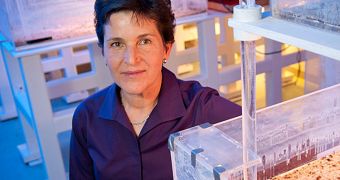A group of investigators from the United States says that ants which forage for food tend to display a behavior that mirrors the protocols used for Internet data traffic control. The amazing finding was made possible through the efforts of researchers at the Stanford University.
The work is the result of a collaborative effort between an ant biologist and a computer scientist. The two were able to take a very close look at how ants communicate, and establish that the “anternet” exists. Their study was focused on figuring out how the ants decide how many foragers to send out.
Not all foraging ants leave the nest at the same time. The process of deciding how many of the insects need to go outside is apparently very complex, but also similar to Internet protocols that look to establish how much bandwidth is available for data transfer, before actually sending the information.
Stanford biology Professor Deborah Gordon reached out to colleague Balaji Prabhakar, a professor of computer science, for this investigation. Though the latter initially saw no similarities between ant behaviors and the Internet, a link soon emerged.
“The next day it occurred to me, 'Oh wait, this is almost the same as how [Internet] protocols discover how much bandwidth is available for transferring a file'!” Prabhakar explains.
“The algorithm the ants were using to discover how much food there is available is essentially the same as that used in the Transmission Control Protocol,” he went on to say.
In the case of harvester ants (Pogonomyrmex barbatus), researchers noticed that the number of workers which go out to look for food is determined by food availability. The latter controls the insects' behaviors through a feedback mechanism similar to the one used by the TCP protocol.
If foragers return from their quest a short while after departing, then this is interpreted as a sign of resource abundance, and more workers set out. Conversely, if it takes a long time for a departed ant to return, then it means that resources are scarce, and the efforts of the colony are redirected.
“Ants have evolved ways of doing things that we haven't thought up, but could apply in computer systems. Computationally speaking, each ant has limited capabilities, but the collective can perform complex tasks,” Gordon explains.
Details of the new study are published in a paper appearing in the August 23 issue of the peer-review, open-source journal PLoS Computational Biology, which is edited by the Public Library of Science.
“So ant algorithms have to be simple, distributed and scalable – the very qualities that we need in large engineered distributed systems. I think as we start understanding more about how species of ants regulate their behavior, we'll find many more useful applications for network algorithms,” the expert concludes.

 14 DAY TRIAL //
14 DAY TRIAL //